Clients
A Client in Magistrala can be a device or an application that can be used to publish or subscribe to messages.
Create a Client
To create a client, click on the + Create button present on the top-left corner of the page. You can also create multiple clients by clicking on the + Create Clients button and uploading a .csv file with client names and any other fields you would like to add.
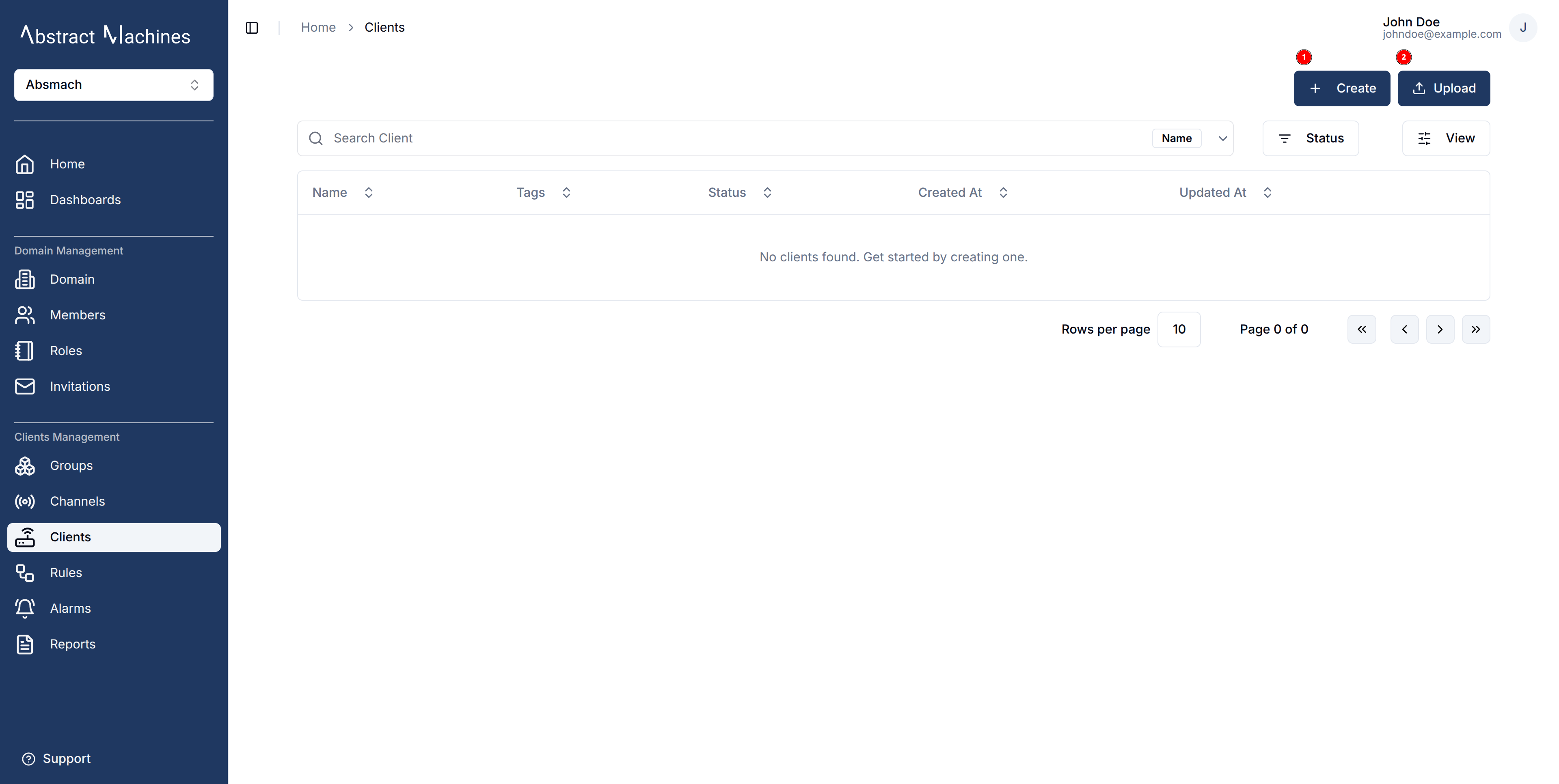
Client Information
Add a client name and optionally a key (has to be unique), tags and metadata.
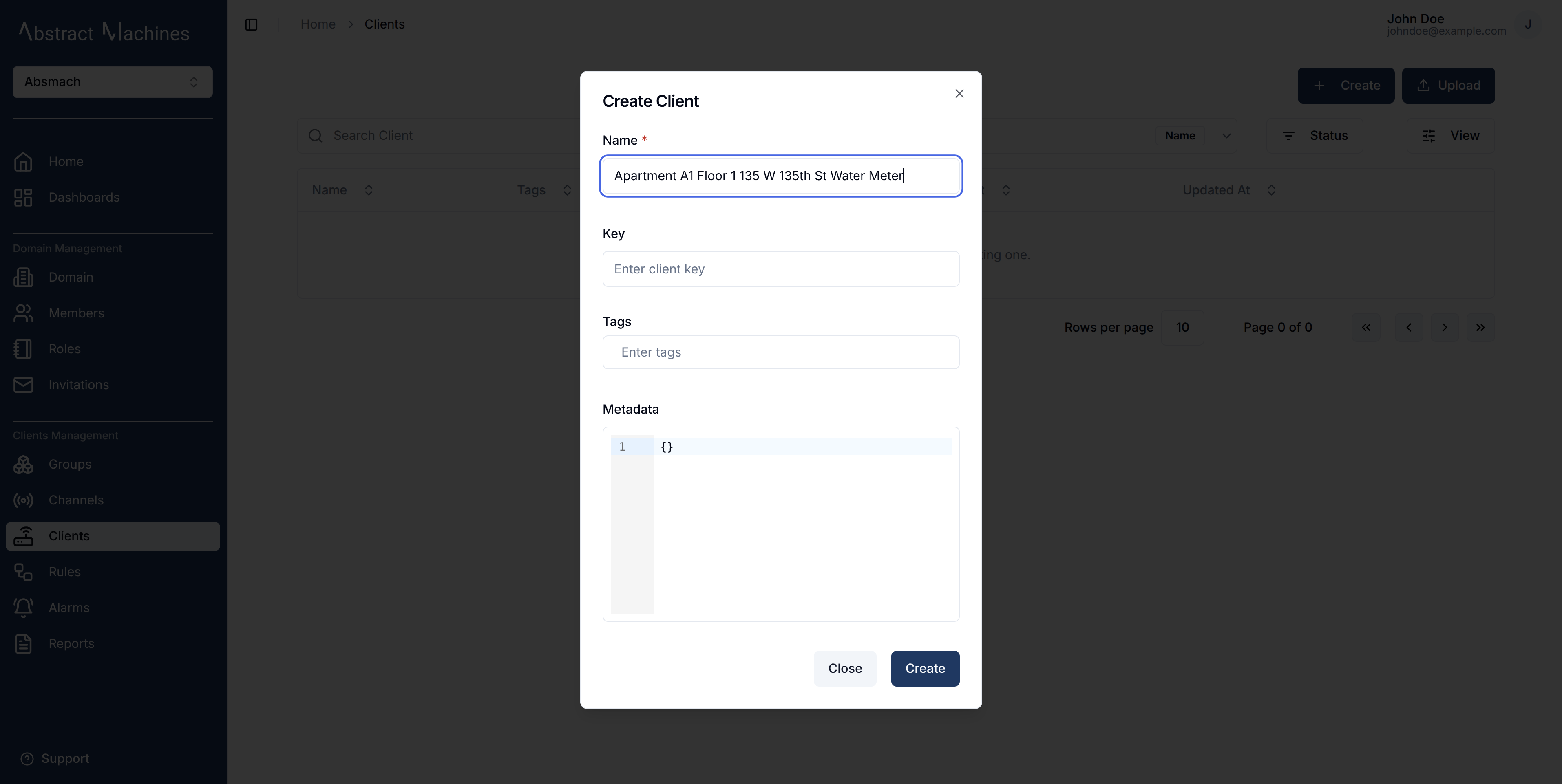
The client key will be used to authorize the device to send messages.
Bulk Creation
You can be able to create clients in bulk by uploading a .csv file with the following fields in order:
- Name (Required)
- Secret
- Tags
- Metadata
A sample of the .csv file can be found here.
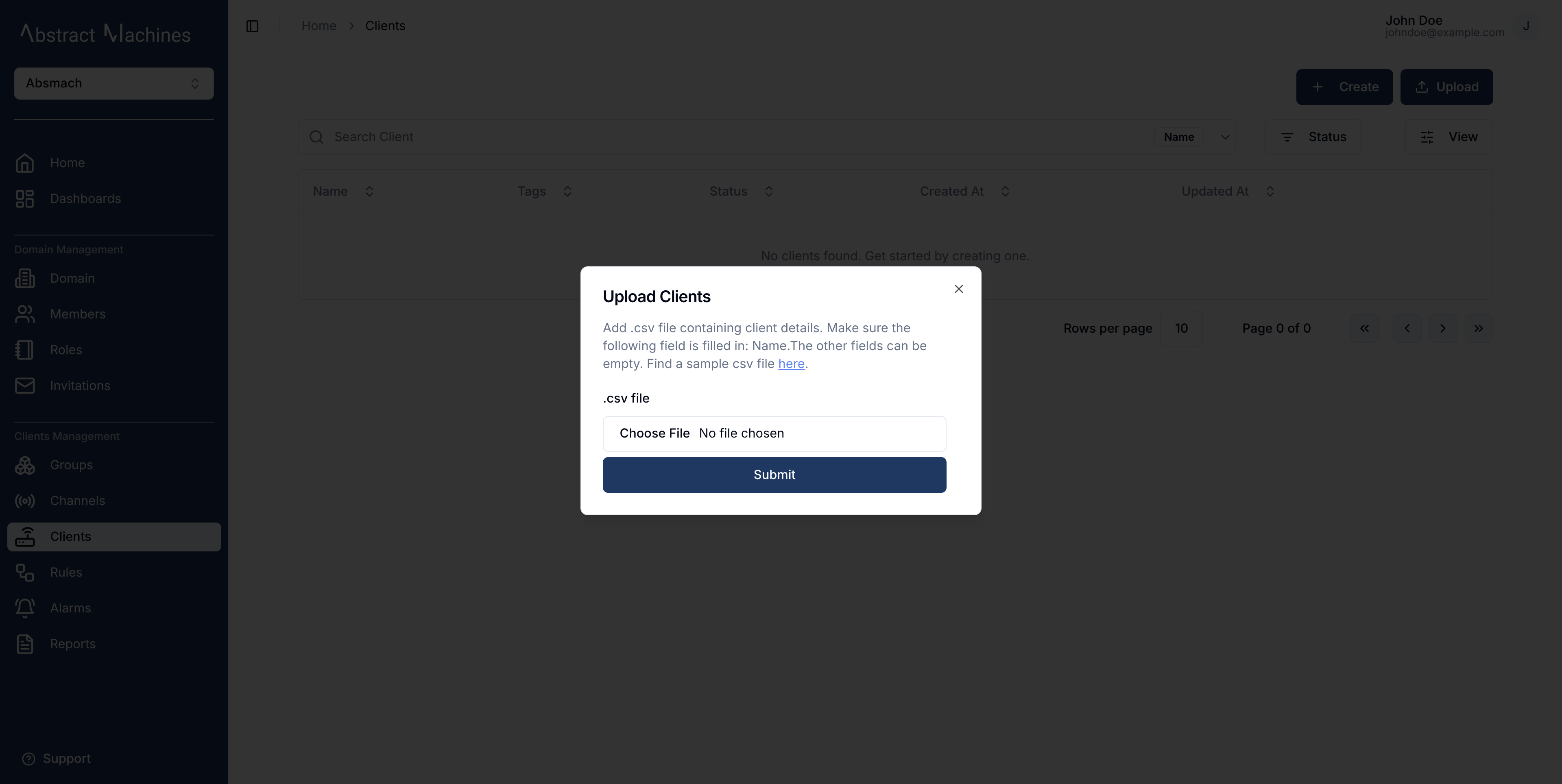
View a Client
After creating a client, you will be able to see the created client on the clients table. To view that client click on the row or the view button in the row actions
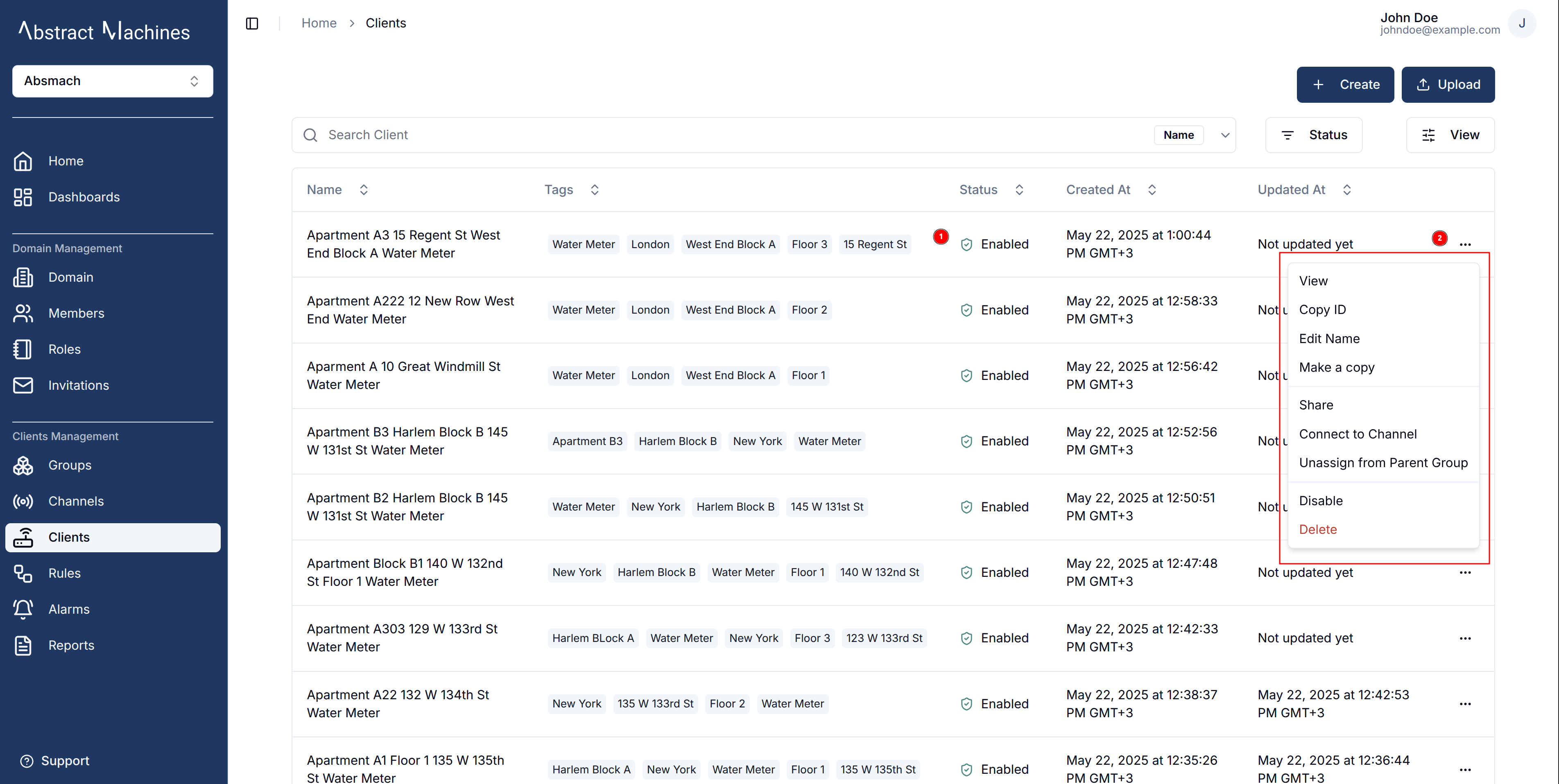
This will lead you to the client configuration page, where you can view all the client details.

Configurations
This page consists of key information relating to the specific Client which can be retrieved in an instance. There are fields such as Tags and Metadata that assist in further classification and search functionalites for the clients.
Client Configuration
This section enables a user to update the following client details:
- Name
- Client Key
- Tags
- Metadata
- Status
To update a field, click on the pencil icon on the far end of the field to edit. Once you have updated the value, click on the check icon to update the changes or the cross icon to cancel the change. To update the client status, toggle the switch on the far end of the status field.
Metadata MUST be a valid JSON object to be considered valid. Tags require the user to click Enter after each tag to have the entry recognised as valid Tag.
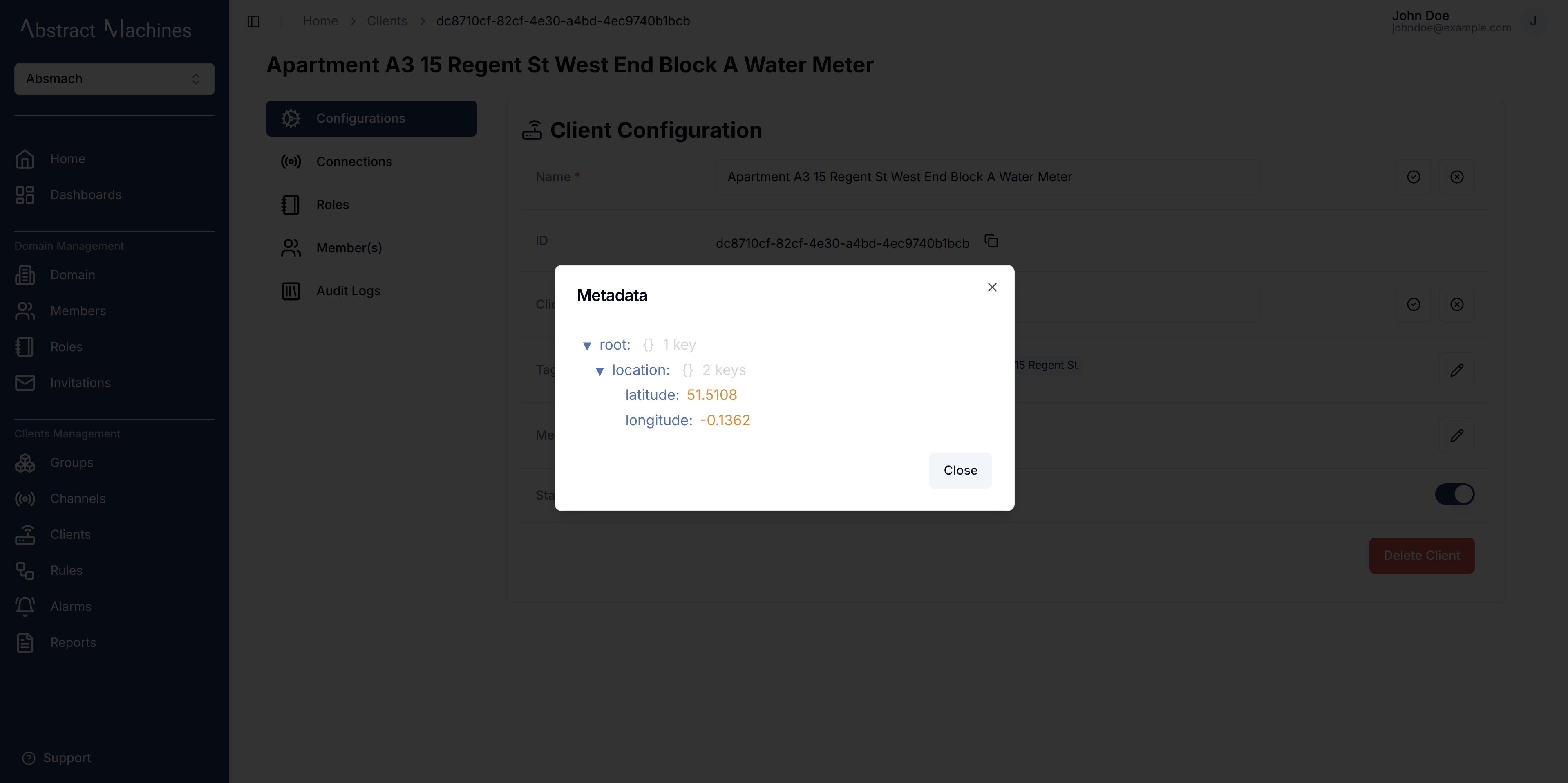
Connect to a Channel
Navigate to the Connections section of the client navigation. This will lead you to the connections page where you can view the channels a client is connected to.
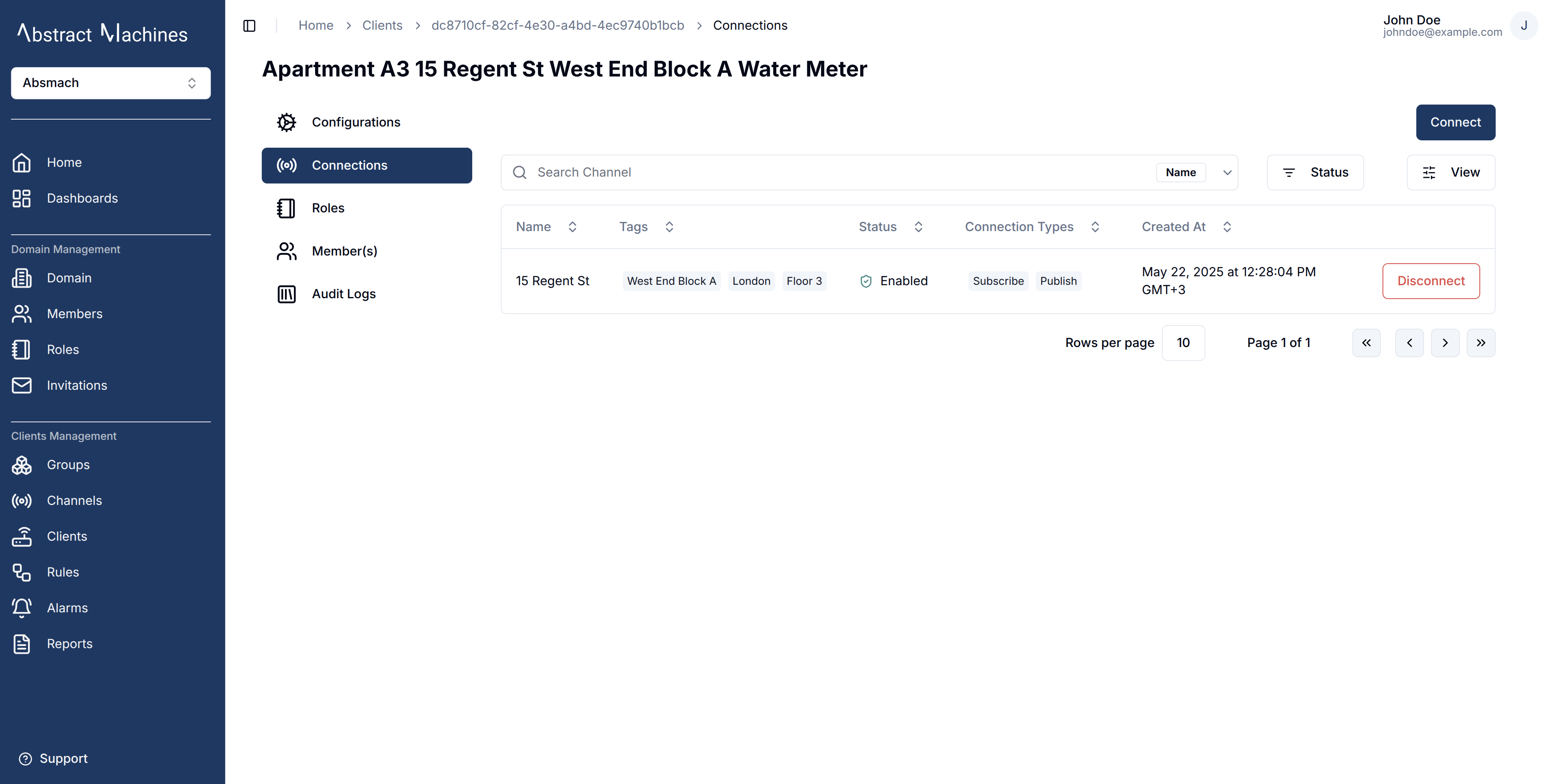
In this page you are able to add a connection by clicking on the Connect button on the top right corner.
This opens up a dialog box that allows you to select the channels you want to connect to and with which connection type. A client can have both connection types selected.
There are two connection type options:
- Publish: Allows the client to send messages in the channel
- Subscribe: Allows the client to read messages in the channel
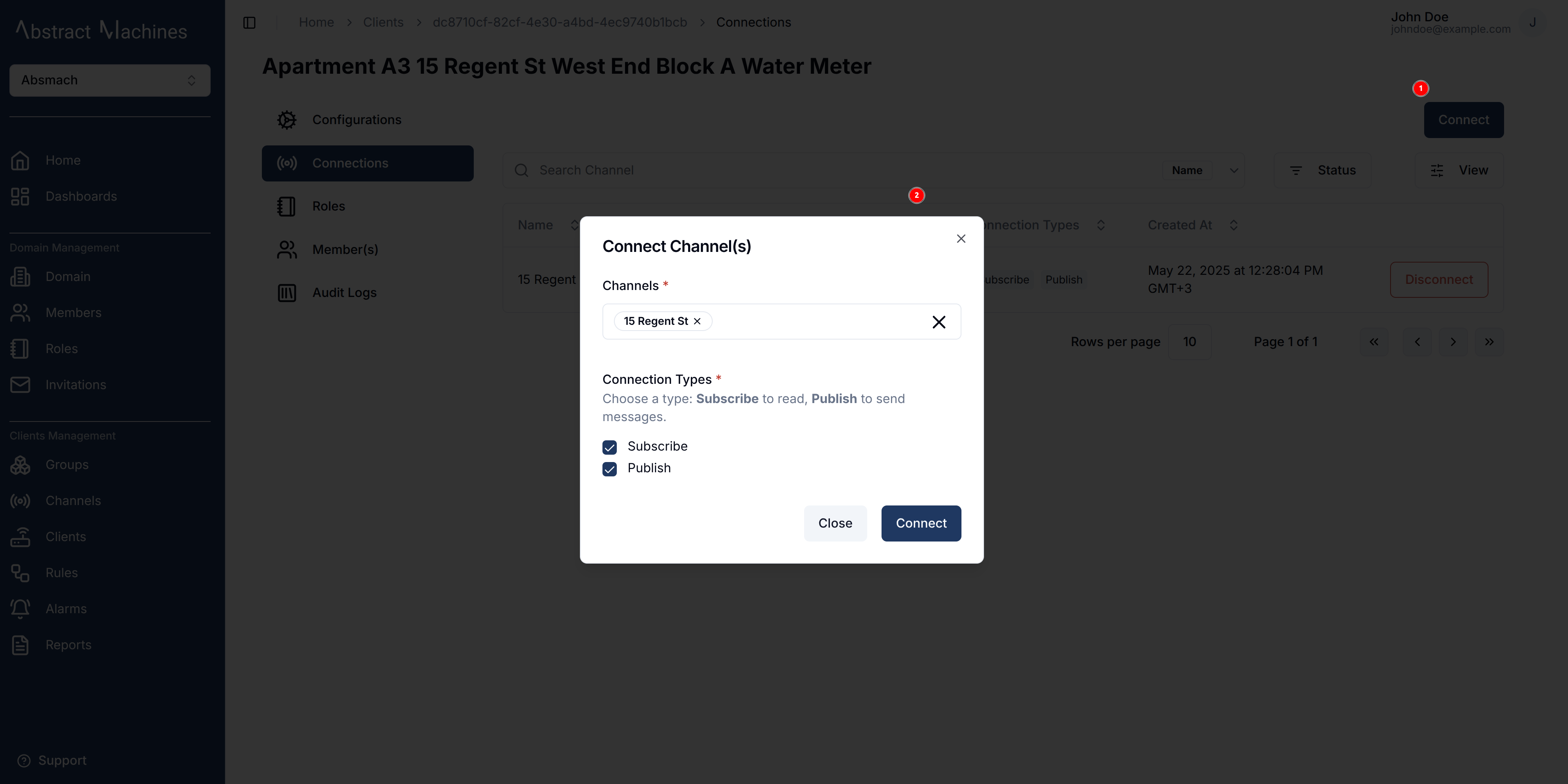
To disconnect from the channel, click on the Disconnect button at the end of the channel row.

This will open up a dialog that allows you to select which connection type you want to remove. You can remove one or both of the connection types if you have multiple.
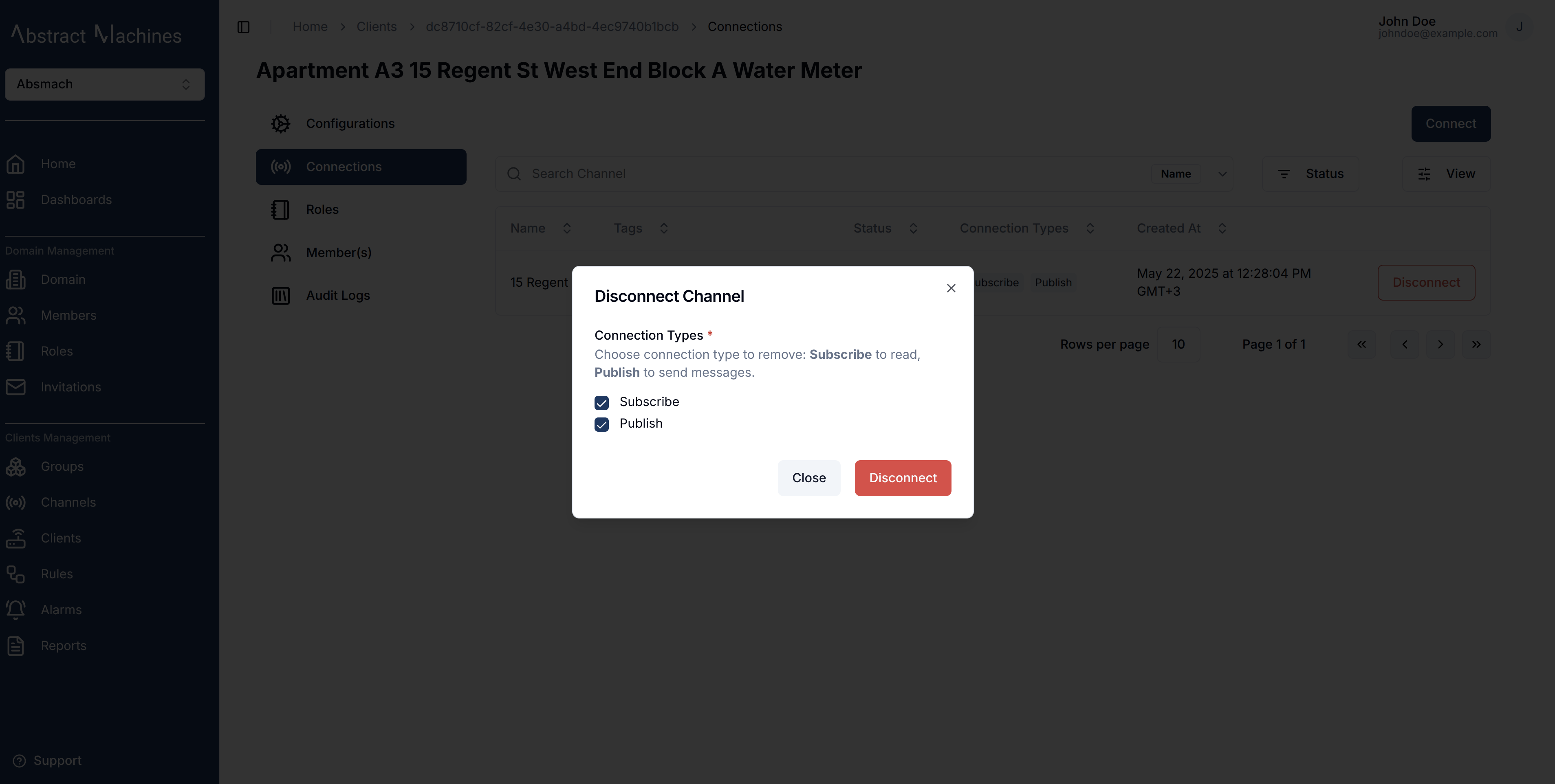
Client Roles
Roles allow you to group a specific set of actions and allocate them to users.
To create a role, navigate to the roles section on the client navbar. Click on the + Create button and provide a role name. The actions and members are optional fields.
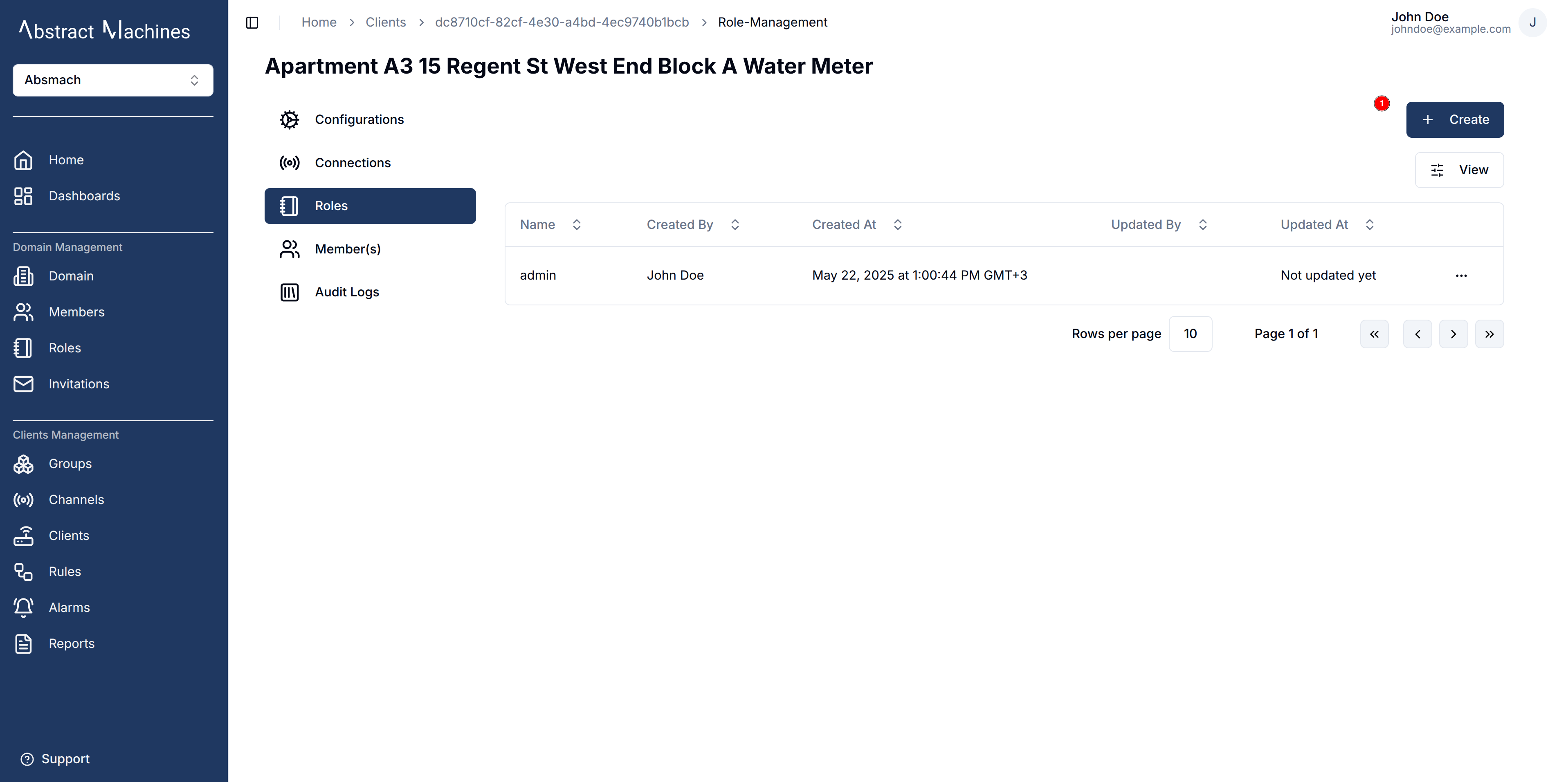
Role Information
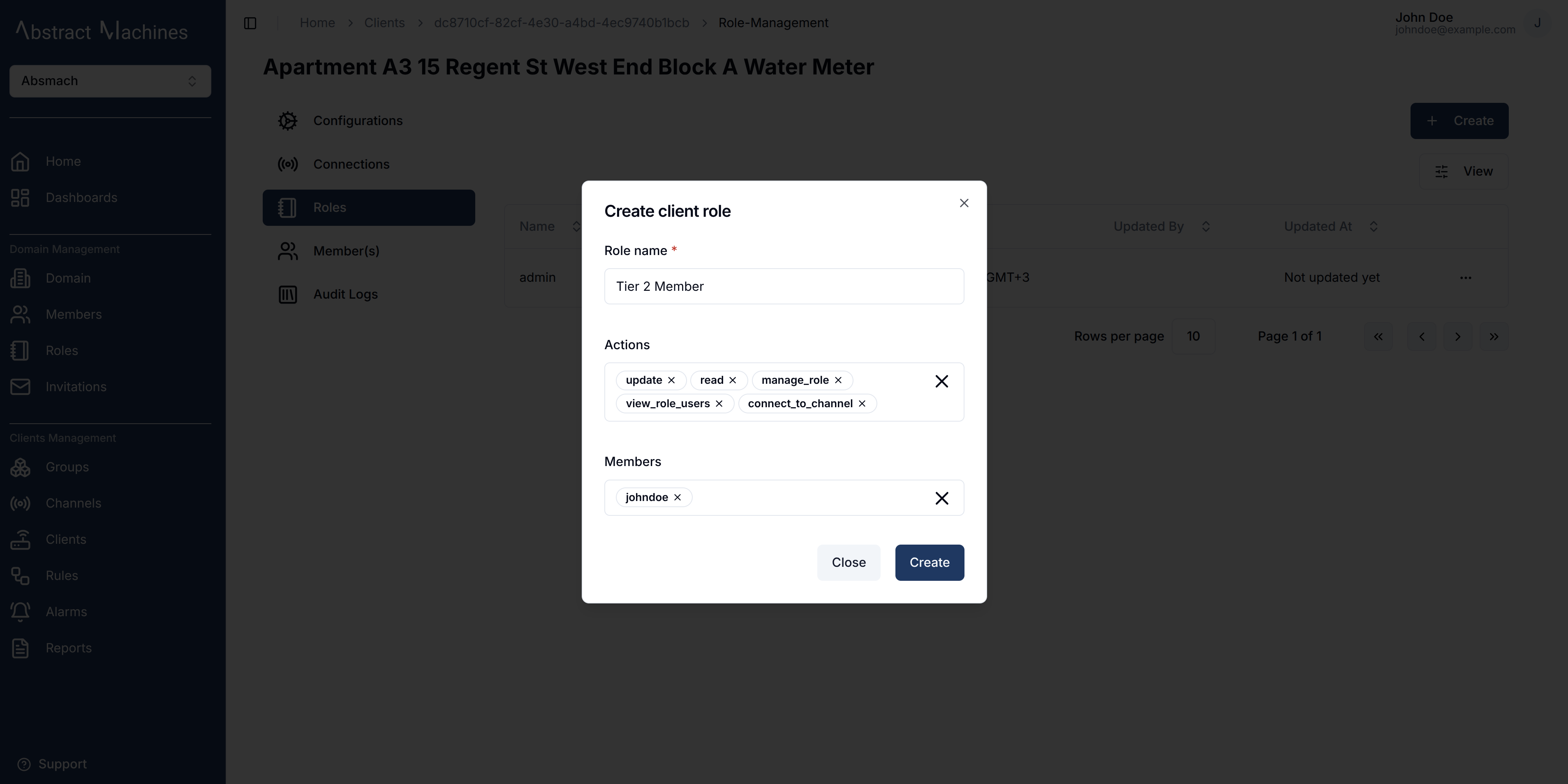
The role name is complusory. You can optionally provide the role actions by selecting from the available actions. You can also optionally provide the members by searching for a user with their username.
The following is the list of available actions for a client:
- update
- read
- delete
- set_parent_group
- connect_to_channel
- manage_role
- add_role_users
- view_role_users
- remove_role_users
Update Client Roles
Clicking the Role in the Role Table leads to the individual Role Page. Here there are two tables for the Role Actions and the assigned Role Members.
To update a role name, click on the pencil icon on the far right end of the field, update the value then click on the tick icon to update the changes or the cross icon to cancel the changes.
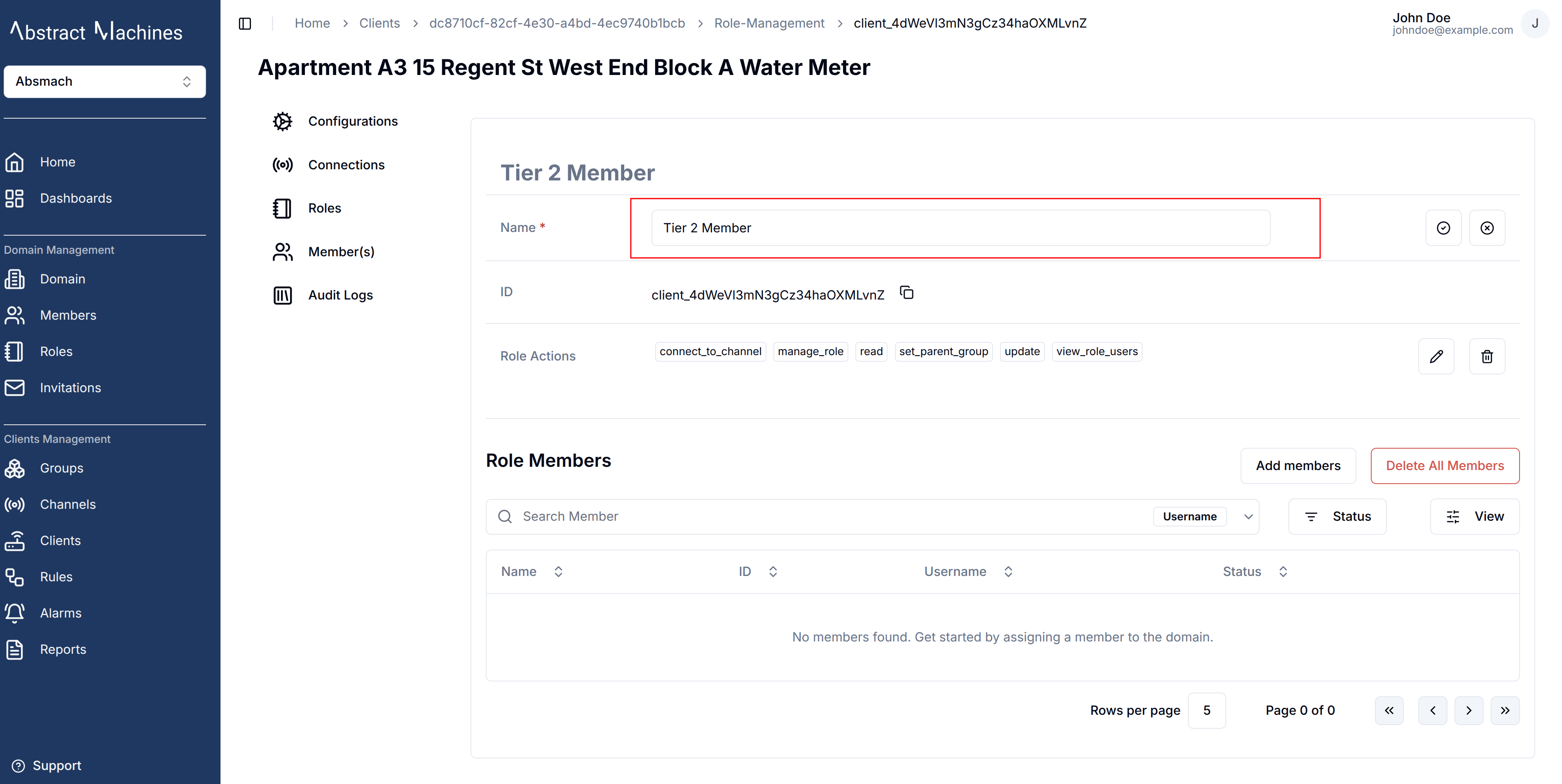
To update the Role Actions click on the pencil icon, it will pop up a dialog box allowing you to select the actions and users you want to add.

To update the Role Members, click the Add Members button. A popup dialog will appear with the list of Domain Members from which a user can select.

Delete Client Roles
You can also delete actions and members by clicking on the trash icon. It pops up a dialog that allows you to select which action you want to remove. There is also an option for clearning the whole list if that is needed as well.

When it comes to Role Members , you can clear the whole table with the Delete All Members which will lead to this alert dialog:
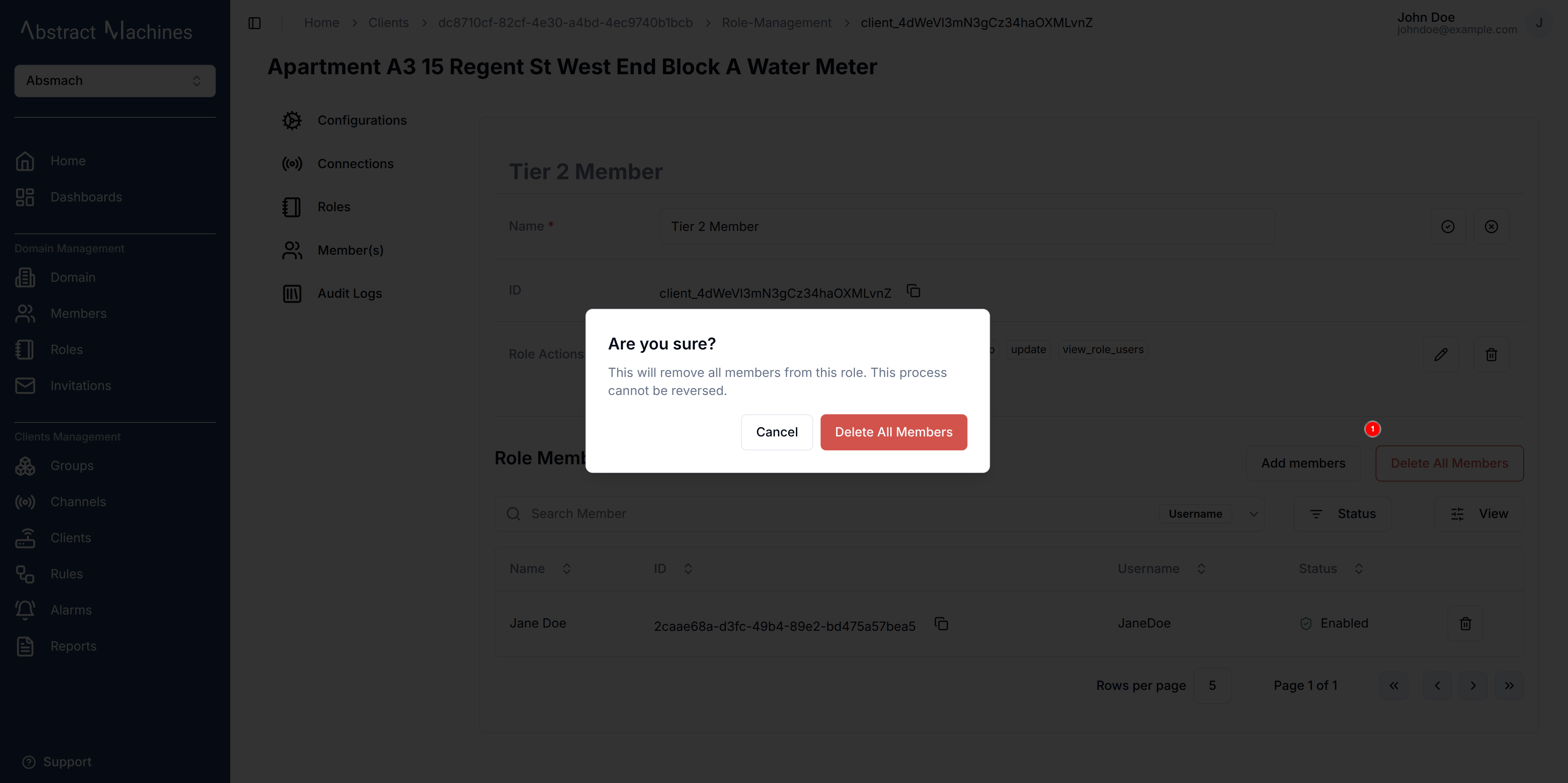
To delete specific members from the Role Members Table, click on the trash icon.
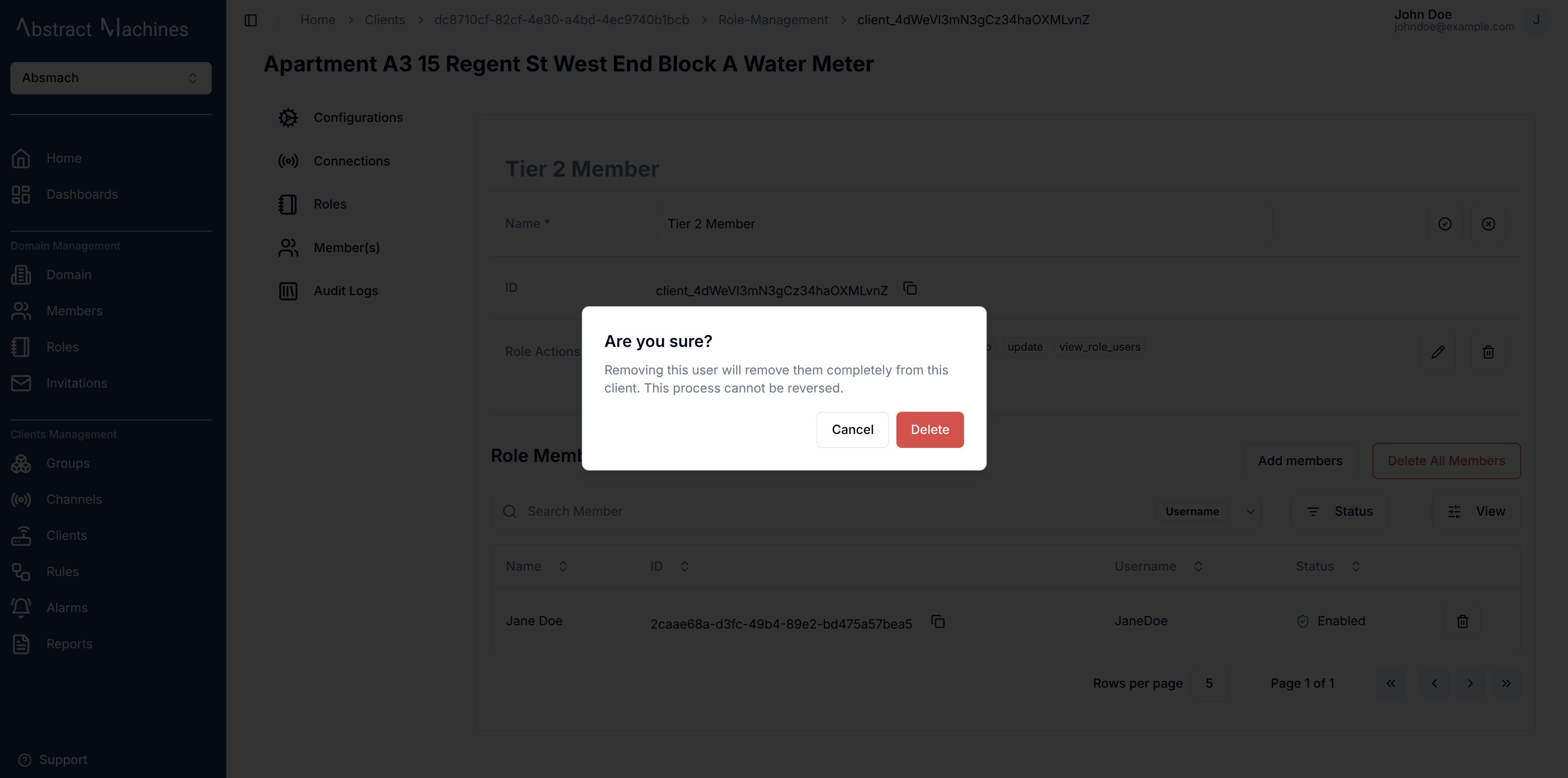
Client Members
While we can create new members from the Roles section alongside the new roles actions, we can also assign members to the client through the Members Section.
Clicking on the Assign Member button will open a dialog box that allows the user to select amongst the Domain Members present as well as the Roles present in the Client.

Audit Logs
Audit logs track all client-related events, including creation, updates, role changes, and connection activity.
Each log entry displays the operation type, a timestamp, and optional details for deeper inspection.
You can search logs by operation type using the search input above the log table.
The most recent operations—such as client.view, client.create, and channel.connect—are displayed at the top.
